by Craig Brelsford
Founder, shanghaibirding.com
On Sat. 8 April I birded Cape Nanhui with John MacKinnon. John is co-author of A Field Guide to the Birds of China, the most influential book ever written about China’s birds. On John’s first visit to the tip of the Shanghai Peninsula, we noted 84 species. John and I were joined by veteran birders Michael Grunwell and Russell Boyman and the outstanding high-school birder Larry Chen.
We gave John the Grand Nanhui Tour, starting at Luchao to the south and ending 30 km north at Binhai. Heading back to the city, we made a brief stop at the sod farm just south of Pudong Airport, where we found a single Oriental Plover.
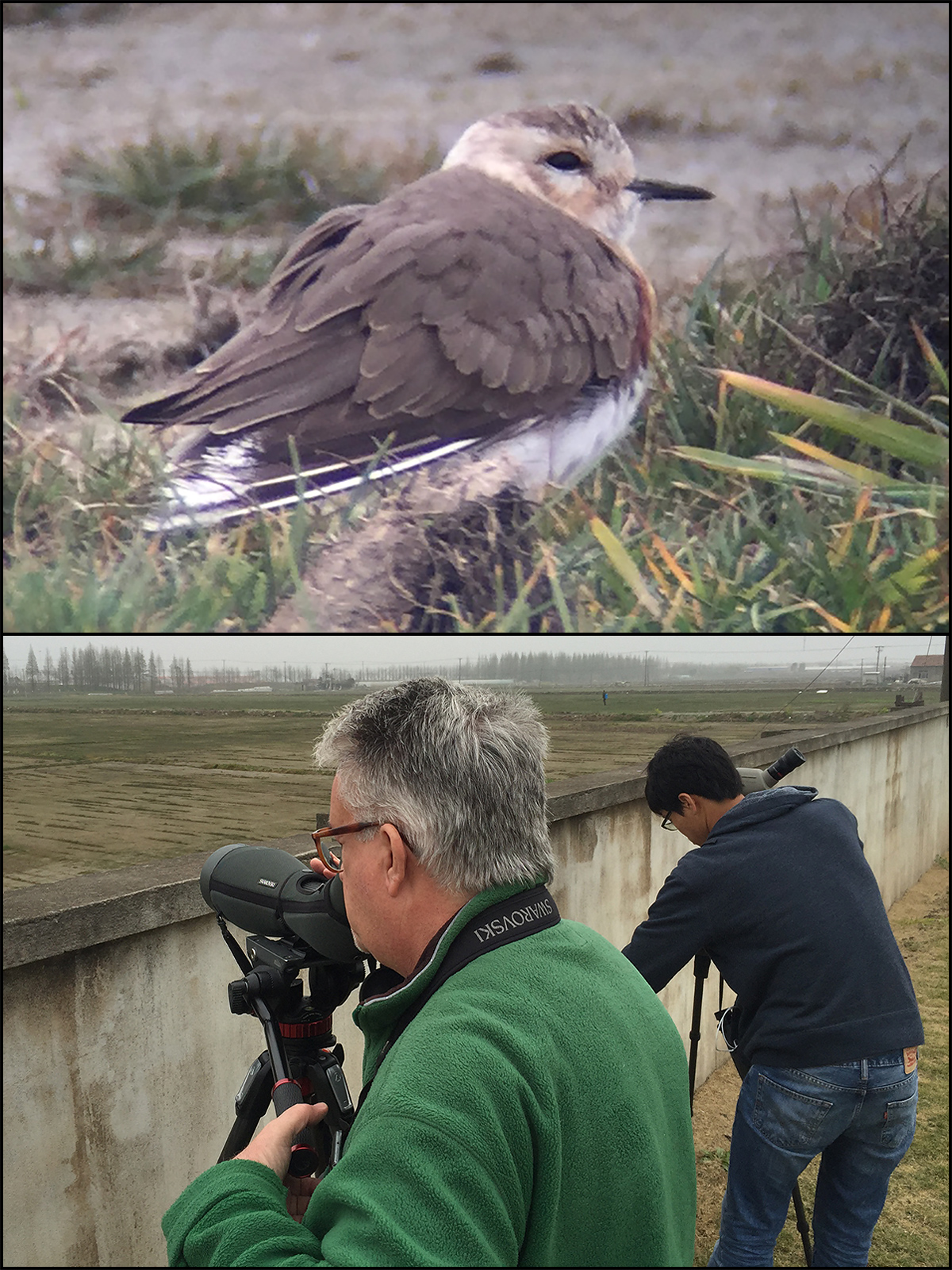
Nanhui yielded 23 Marsh Grassbird performing the song flight at three locations, and we saw 10 Endangered Great Knot and 1 Near Threatened Curlew Sandpiper. We had a pair of Rufous-faced Warbler and a Common Starling.
Also: Garganey 57, Greater Scaup 1 (Dishui Lake), Little Curlew 31 (flock), Sharp-tailed Sandpiper 11 (first of season), Red-necked Stint 1 (first of season), Wood Sandpiper 1 (first of season), Peregrine Falcon 1, Dusky Warbler 1 at Magic Parking Lot (possibly wintered there), and Reed Parrotbill 18.
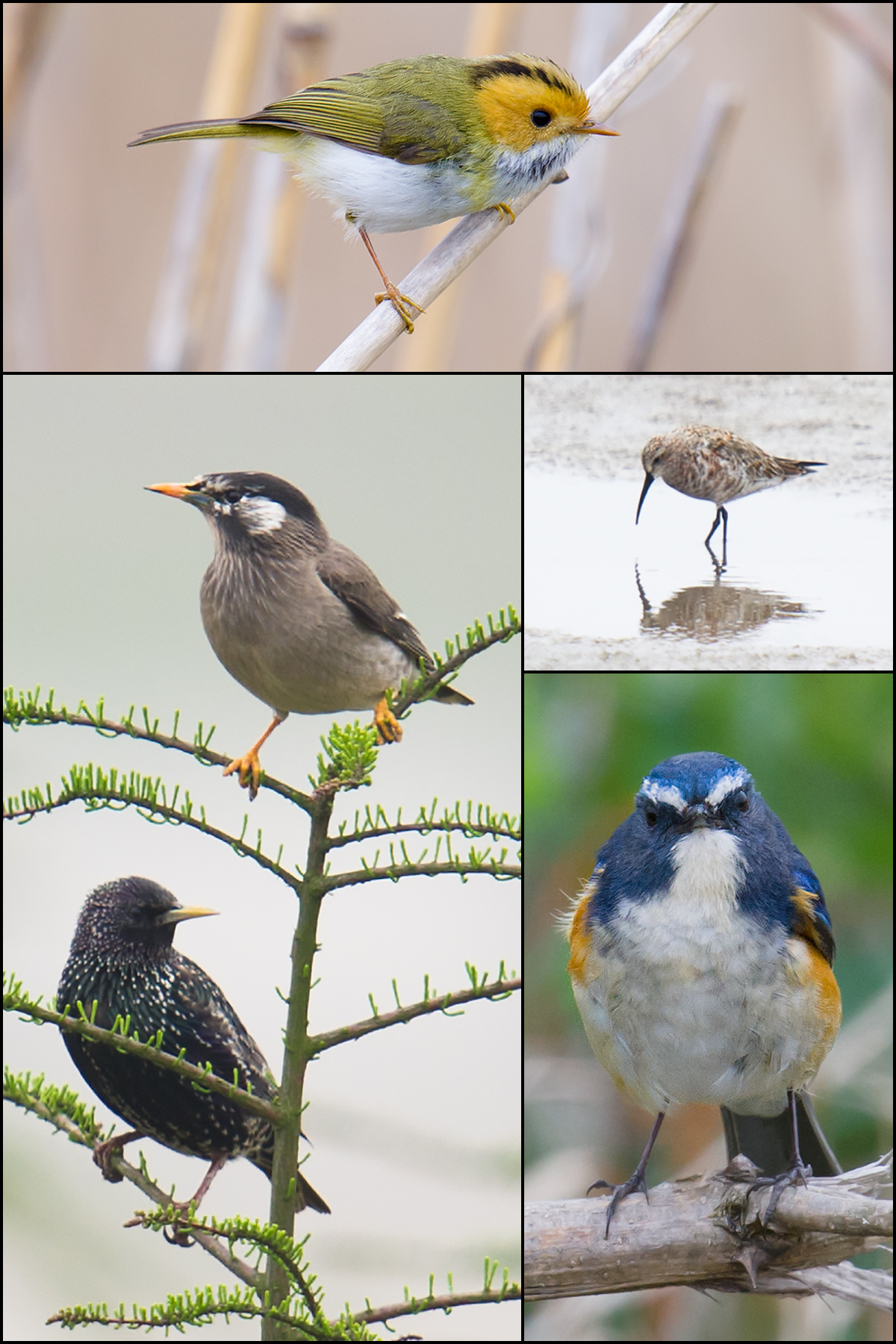
GETTING TO KNOW JOHN MACKINNON

Our partner, John MacKinnon, co-authored A Field Guide to the Birds of China. Published in 2000, the book has sold more than 50,000 copies and remains the only bird guide in English covering all China. John also wrote the first and second guest posts in the history of shanghaibirding.com.
John is witty and a fine storyteller. He had us roaring with tales drawn from his six decades as a researcher in Asia. The funniest story was about the doctor back home in Britain. Every time John straggled in, the doc would call in his students, so that they could study the strange new tropical disease John had contracted.
“I never cared about my health, because I never expected to live this long!” John said.
John also talked about his masterpiece, A Field Guide to the Birds of China.
It is difficult to overestimate the importance of the Field Guide. Had it merely been a window for Westerners to the birds of the world’s most populous country, then John’s work would have been important enough. The Field Guide, however, in translated form has introduced tens of thousands of Chinese to the birds of their own country. John’s Chinese name, Mǎjìngnéng (马敬能), is known by every birder in China.
John faced obstacles unknown to field-guide writers in North America and Western Europe, where birding has been practiced for 200 years. His sources were often thin, he said.
“For range maps, I had nearly nothing from Russia,” John said. “A Chinese book had ranges stopping at the Chinese border. Another book had no paintings, only descriptions.”
To critics who unfairly compare John’s Field Guide to field guides covering more developed parts of the world, John had this to say:
“You’ve got to finish something. We finished the book. We could have waited and said, ‘Oh, another species has been split, we must revise,’ but at a certain point you have to say, ‘We must go with what we’ve got.’”
To this day, no Westerner has repeated John’s feat.
John is a handy photographer and got off some good shots, three of which are displayed in the Day List at the bottom of this post. Here are some photos I took of the pioneer birder and naturalist.
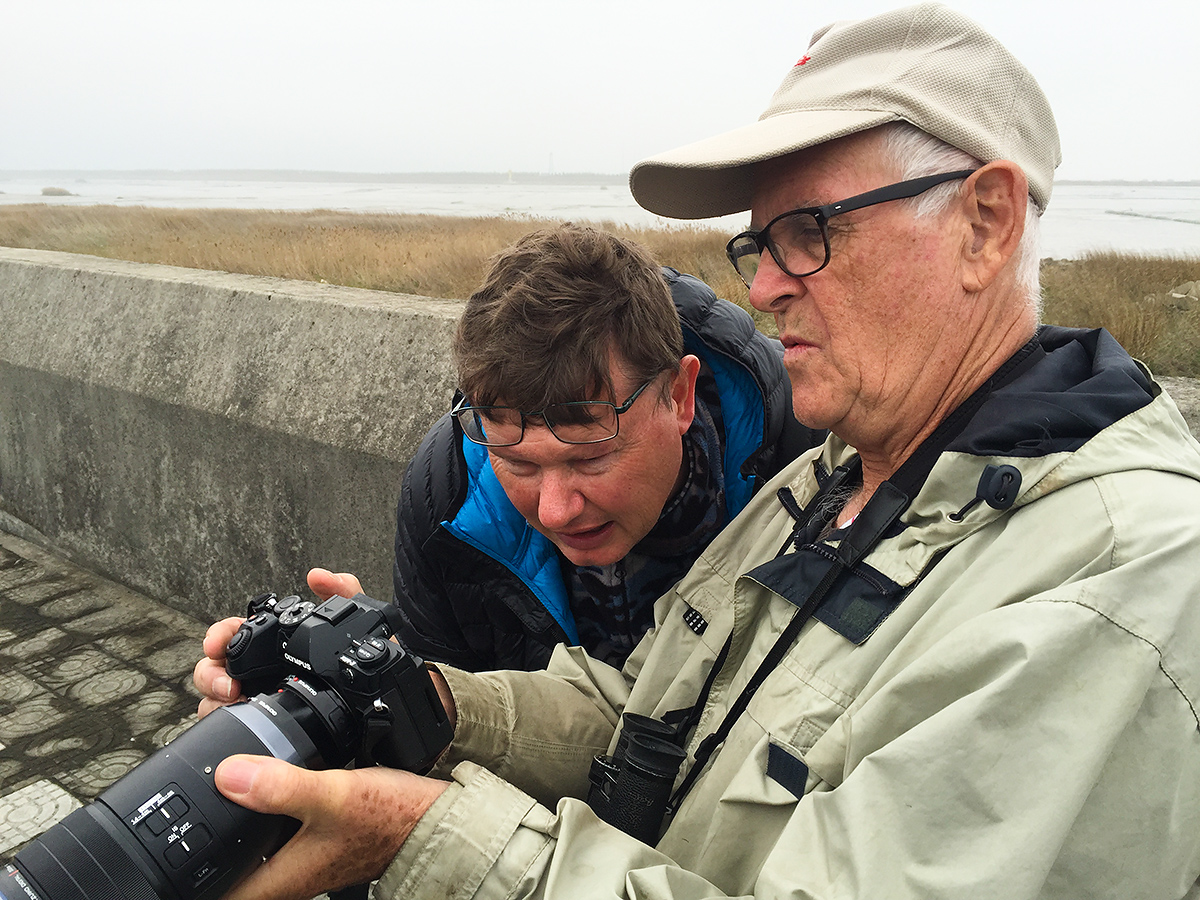
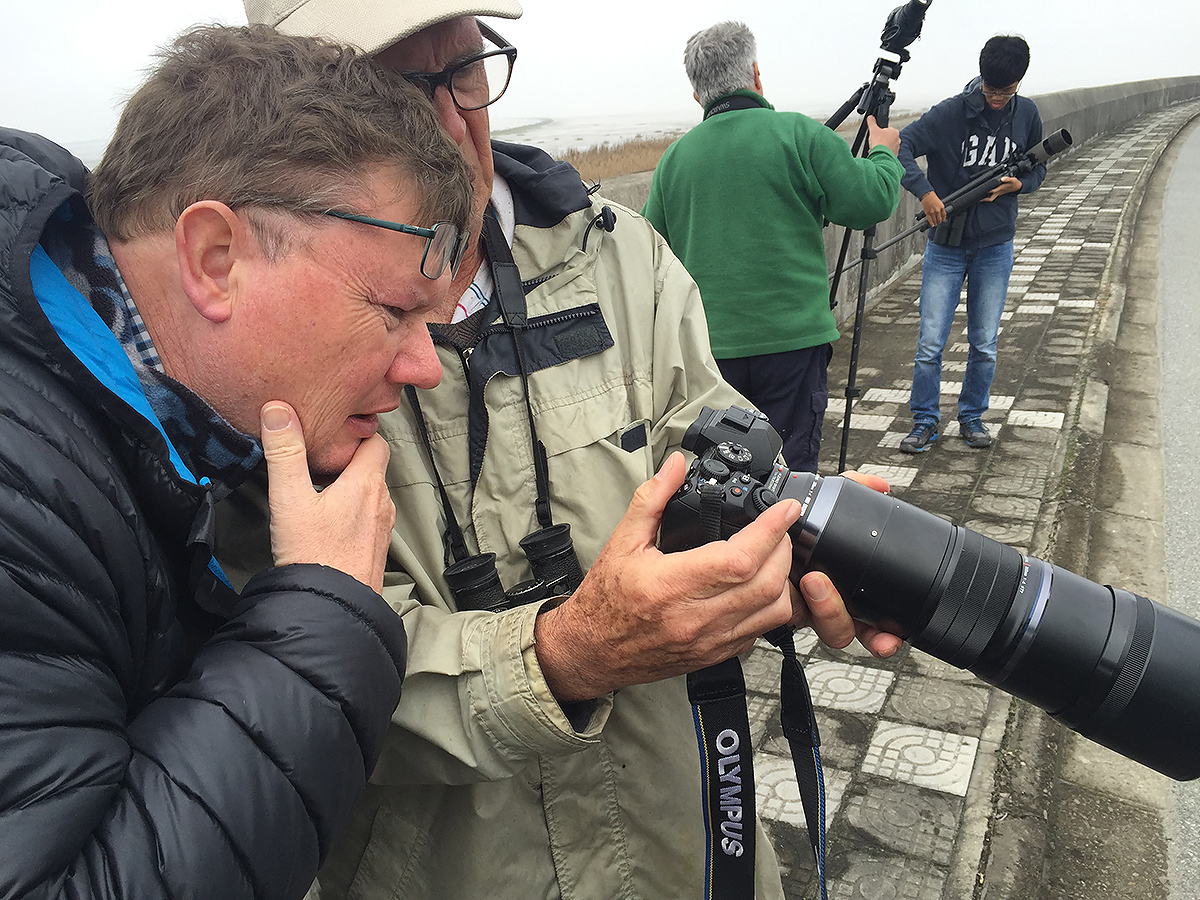
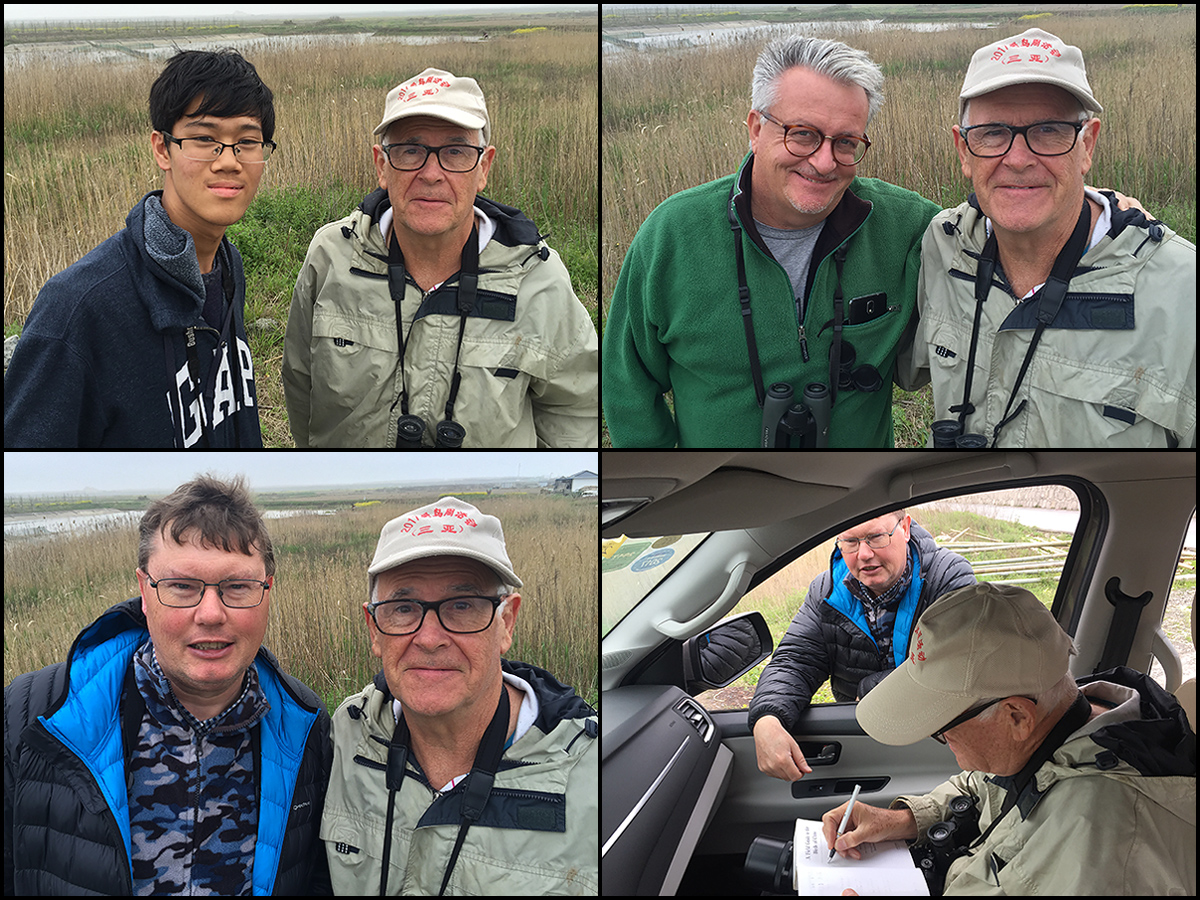
MARSH GRASSBIRD ON THE BRINK
Marsh Grassbird were singing in the large reed beds at Nanhui. They were most conspicuous at the reed bed south of the Holiday Inn (30.870711, 121.942976). The species, listed as Near Threatened by IUCN, was also noted in the pristine reed bed (30.931790, 121.949169) associated with the defunct wetland reserve.
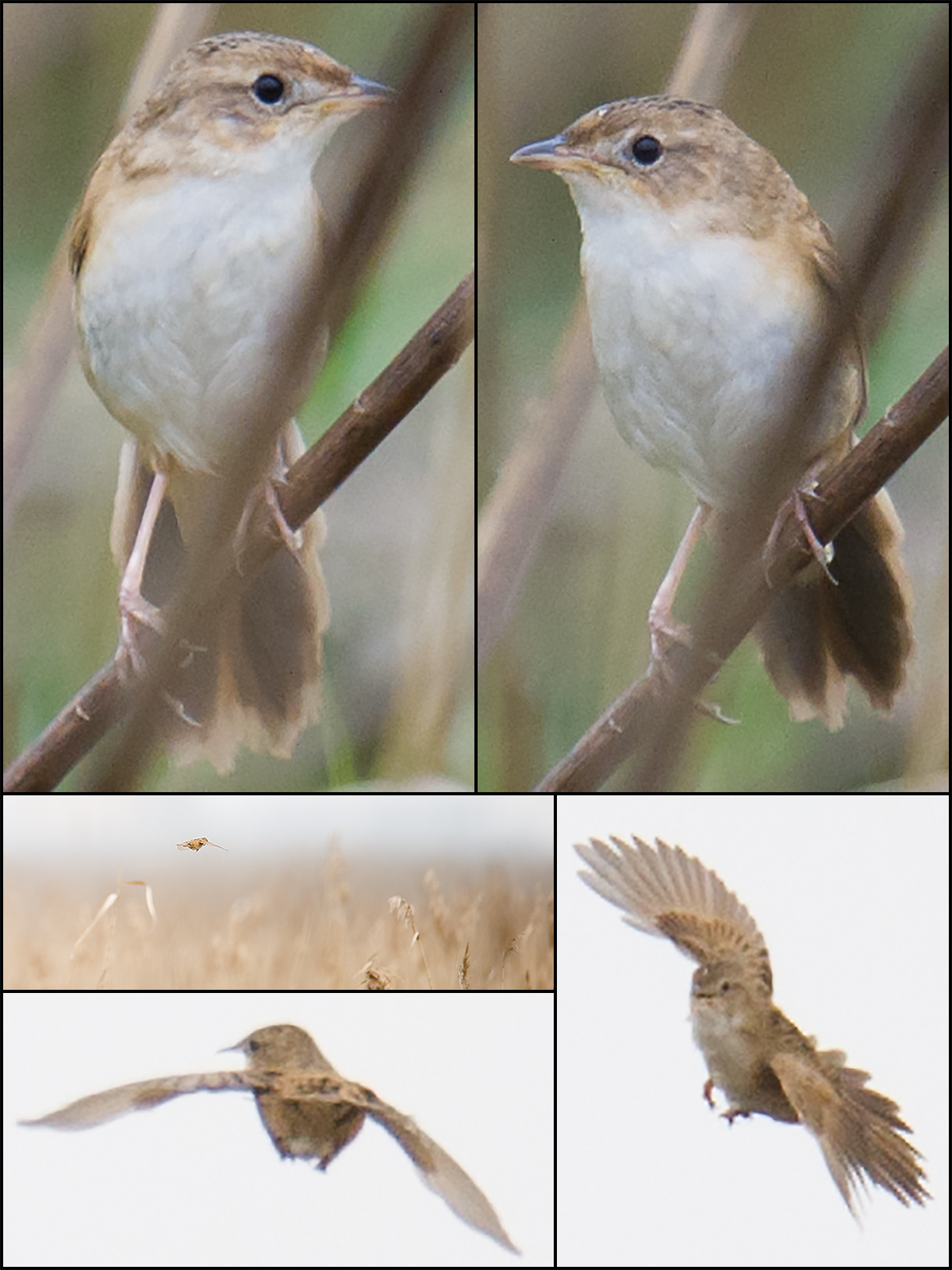
The reed beds at Cape Nanhui may be the last stronghold of Helopsaltes pryeri sinensis on the Shanghai Peninsula. The species is highly dependent on large reed beds. In areas where only strips of reeds remain, the song of Marsh Grassbird is never heard. Its partner species, Reed Parrotbill, a candidate for official bird of the city-province of Shanghai, is only slightly less dependent on large reed beds.
One of the areas where last year my partners and I noted Marsh Grassbird performing its song flight has been flattened. No song of Marsh Grassbird was heard there Saturday. A few Reed Parrotbill were calling in one of the strips of reeds left standing.
Much needs to be learned about Marsh Grassbird in Earth’s Largest City. Birders, look for the fluttering song flight, and listen for this song:
Marsh Grassbird Helopsaltes pryeri sinensis, song, large reed bed (30.870711, 121.942976), Cape Nanhui, Shanghai, by Craig Brelsford (0:07; 1 MB)
DAY LIST
List 1 of 1 for Saturday 8 April (84 species)
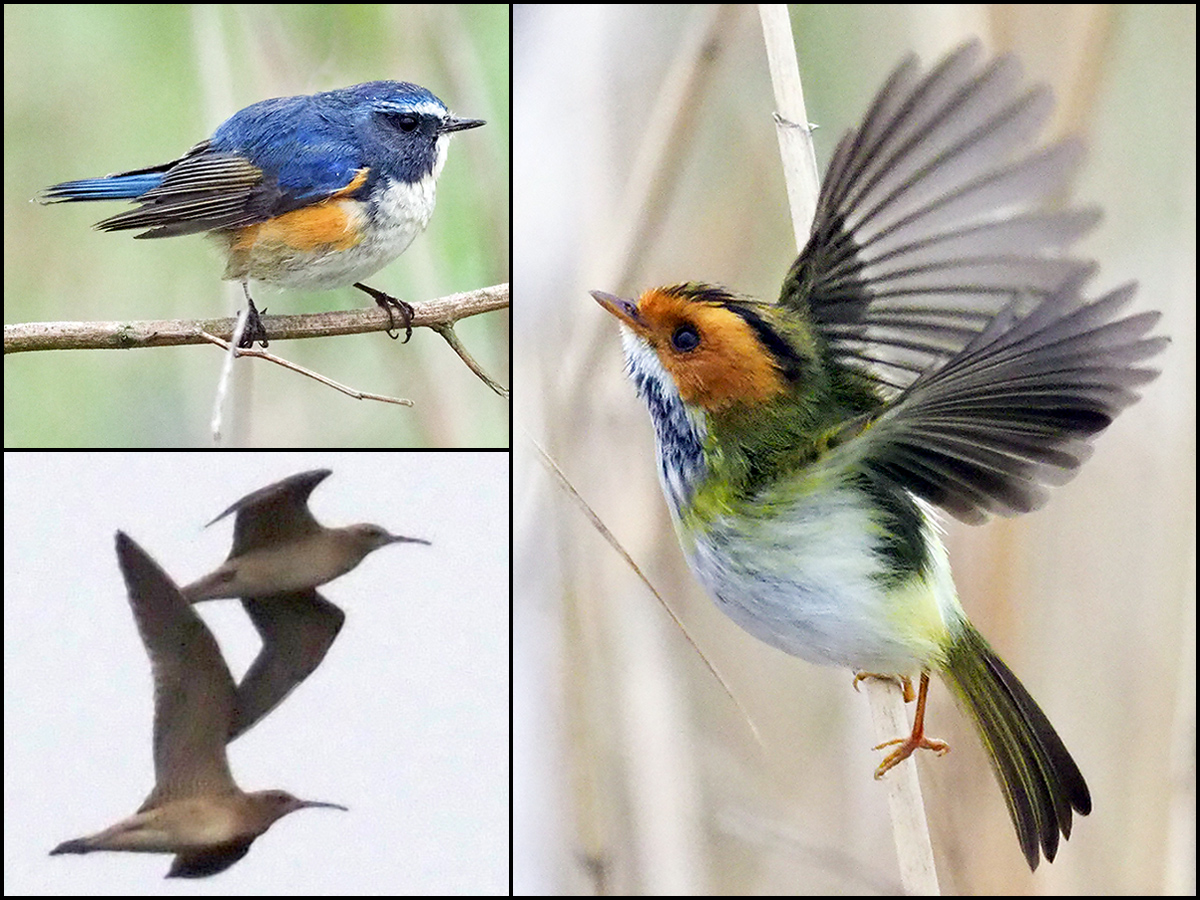
Birds noted around Pudong Nanhui Dongtan Wetland (Pǔdōng Nánhuì Dōngtān Shīdì [浦东南汇东滩湿地]; 30.920507, 121.973159), Pudong, Shanghai, China. We covered the coastal road between Binhai (Bīnhǎi Zhèn [滨海镇]; 31.006250, 121.885558) and Luchao (Lúcháo Gǎng [芦潮港]; 30.851109, 121.848455). Among the points along this 30 km stretch are Iron Track (31.003613, 121.907883), a site providing access to the reed beds at the mouth of the Dazhi River (Dàzhì Hé [大治河]); Big Bend (31.000321, 121.938074); Microforest 4 (30.953225, 121.959083); Microforest 1 (30.923889, 121.971635); Magic Parking Lot (30.884898, 121.968229); Magic GPS Point (30.880563, 121.964551); South Lock (30.860073, 121.909997); Eiffel Tower (30.850531, 121.878047); & the Marshy Agricultural Land (30.850707, 121.863662). List includes birds noted at Dishui Lake (30.908702, 121.945124). Cloudy, hazy; low 13° C, high 18° C. Wind E 15 km/h. PM2.5 AQI: 147 (unhealthful). Visibility 5 km. Sunrise 05:34, sunset 18:18. SAT 08 APR 2017 07:00-16:55. Russell Boyman, Craig Brelsford, Larry Chen, Michael Grunwell, & John MacKinnon.
Hyperlinks in list below connect to entries in Craig Brelsford’s Photographic Field Guide to the Birds of China, published in its entirety on shanghaibirding.com.
Garganey Spatula querquedula 57
Northern Shoveler S. clypeata 4
Eurasian Wigeon Mareca penelope 2
Falcated Duck M. falcata 25
Eastern Spot-billed Duck Anas zonorhyncha 35
Eurasian Teal A. crecca 2
Tufted Duck Aythya fuligula 25
Greater Scaup A. marila 1
Japanese Quail Coturnix japonica 3
Common Pheasant Phasianus colchicus 3
Little Grebe Tachybaptus ruficollis 8
Great Crested Grebe Podiceps cristatus 20
Grey Heron Ardea cinerea 31
Great Egret A. alba 3
Intermediate Egret Egretta intermedia 1
Little Egret E. garzetta 95
Eastern Cattle Egret Bubulcus coromandus 9
Chinese Pond Heron Ardeola bacchus 1
Black-crowned Night Heron Nycticorax nycticorax 40
Common Moorhen Gallinula chloropus 2
Eurasian Coot Fulica atra 20
Black-winged Stilt Himantopus himantopus 13
Kentish Plover Charadrius alexandrinus 27
Little Ringed Plover C. dubius 7
Oriental Plover C. veredus 1 at sod farm S of Pudong Airport (31.112586, 121.824742)
Little Curlew Numenius minutus 31
Great Knot Calidris tenuirostris 10
Sharp-tailed Sandpiper C. acuminata 11
Curlew Sandpiper C. ferruginea 1
Red-necked Stint C. ruficollis 1
Dunlin C. alpina 30
Common Snipe Gallinago gallinago 8
Common Sandpiper Actitis hypoleucos 3
Green Sandpiper Tringa ochropus 1
Spotted Redshank T. erythropus 4
Common Greenshank T. nebularia 20
Wood Sandpiper T. glareola 1
Common Redshank T. totanus 2
Black-headed Gull Chroicocephalus ridibundus 25
Little Tern Sternula albifrons 1
Oriental Turtle Dove Streptopelia orientalis 13
Spotted Dove S. chinensis 2
Eurasian Hoopoe Upupa epops 1
Common Kingfisher Alcedo atthis 2
Peregrine Falcon Falco peregrinus 1
Long-tailed Shrike Lanius schach 2
Oriental Skylark Alauda gulgula 20 singing
Barn Swallow Hirundo rustica 200
Chinese Penduline Tit Remiz consobrinus 35
Light-vented Bulbul Pycnonotus sinensis 13
Rufous-faced Warbler Abroscopus albogularis 2 (pair)
Japanese/Manchurian Bush Warbler Horornis diphone canturians/H. borealis borealis 4 singing
Dusky Warbler Phylloscopus fuscatus 1
Pallas’s Leaf Warbler P. proregulus 1
Yellow-browed Warbler P. inornatus 1
Marsh Grassbird Helopsaltes pryeri sinensis 23
Zitting Cisticola Cisticola juncidis 6
Plain Prinia Prinia inornata 8
Reed Parrotbill Calamornis heudei 18
Vinous-throated Parrotbill Sinosuthora webbiana 100
Common Starling Sturnus vulgaris 1
Red-billed Starling Spodiopsar sericeus 42
White-cheeked Starling S. cineraceus 17
Crested Myna Acridotheres cristatellus 18
White’s Thrush Zoothera aurea 2
Grey-backed Thrush Turdus hortulorum 1
Pale Thrush T. pallidus 11
Dusky Thrush T. eunomus 55
Red-flanked Bluetail Tarsiger cyanurus 3
Daurian Redstart Phoenicurus auroreus 1
Blue Rock Thrush Monticola solitarius philippensis 1
Stejneger’s Stonechat Saxicola stejnegeri 3
Eurasian Tree Sparrow Passer montanus 75
White-rumped Munia Lonchura striata 3
Eastern Yellow Wagtail Motacilla tschutschensis 8
White Wagtail M. alba 28
Richard’s Pipit Anthus richardi 1
Olive-backed Pipit A. hodgsoni 8
Buff-bellied Pipit A. rubescens japonicus 7
Grey-capped Greenfinch Chloris sinica 1
Chestnut-eared Bunting Emberiza fucata 23
Little Bunting E. pusilla 16
Black-faced Bunting E. spodocephala 13
Pallas’s Reed Bunting E. pallasi 8
Featured image: John MacKinnon (R), co-author of A Field Guide to the Birds of China, with Craig Brelsford, executive editor of shanghaibirding.com. (Larry Chen)

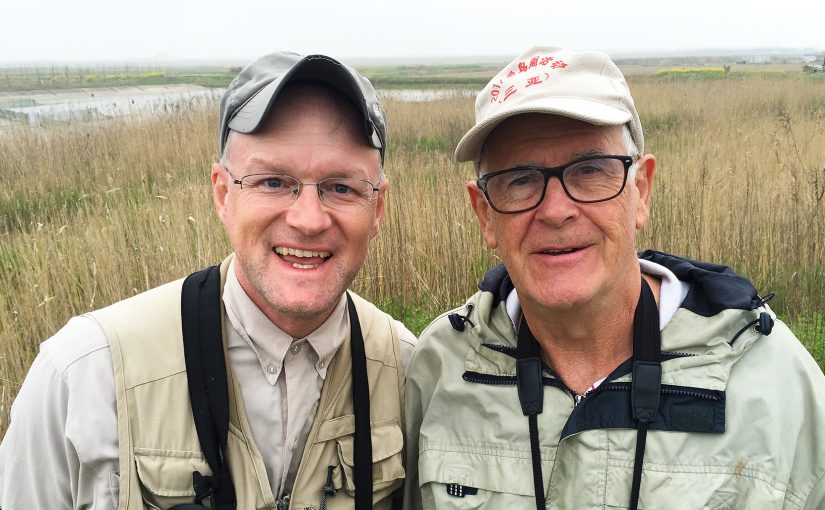
I’m a British birder visiting Shanghai for work next month. I will be there between the 15th-22nd March, staying near the Huqiu Road.
I will have some time in the mornings before work and possibly an afternoon free to look at birds. I’m very keen to see birds with a link to the western palearctic through vagrancy, such as Thrushes, Buntings (and perhaps with the date some robins and phylloscs?) unless too early? It was myself and a friend who were handed the dead pale legged leaf warbler in the uk in Oct 2016 and I’d love to see a live one!
I do not know the climate and what spends winter in shanghai so i could be way off with those expectations.
I’m also particularly interested in Gulls, I believe Huangpu Park is a good site to see them, what species should I expect? Taimyr, Vega, Slaty Backed and Black tailed? also Kamchatka Gull? What’s common?
If you could pass on any advice I’d be really grateful.
Thanks for reaching shanghaibirding.com. I just viewed your website; some real love of birds reflected there.
You want gulls and I think will be staying downtown. It will be March. Go to Huangpu Park: https://www.shanghaibirding.com/loons/ (scroll down to the point below the paragraphs on loons)
You will be in Shanghai before the big passerine migration starts up, and for that reason, and bearing in mind your love of shorebirds/waders, I suggest that you, if possible, get out to Cape Nanhui, the subject of the post to which are appended your and my comments.
This post describes my trip with John MacKinnon to Cape Nanhui. The date was 8 April 2017, three weeks later in the year than your trip will be. At that time of year, three weeks is a lot, but some of the birds we saw that day may be available to you.
Also see the page on Cape Nanhui: https://www.shanghaibirding.com/sites/nanhui/
Do Century Park (https://www.shanghaibirding.com/tag/century-park/), the best birding park in urban Shanghai.
More on Century and the other parks of urban Shanghai: https://www.shanghaibirding.com/sites/urban-shanghai/
All-time list of birds viewed at Century Park: https://www.shanghaibirding.com/sites/urban-shanghai/century-bird-records/
More on all the best birding sites in Shanghai: https://www.shanghaibirding.com/sites/
Passage from the Urban Shanghai page I just linked to above:
Please let me know how I can help you further,
Craig
That’s great of you, your site is a wealth of knowledge.
I basically will be over the moon if I see some or all of these below listed species, can you say whether this is likely between the 15th-22nd March, from what I’ve read it looks possible:
White’s Thrush
Dusky Thrush
Naumann’s Thrush
Red-flanked Bluetail
Pallas’s Leaf Warbler
Siberian Blue Robin
Emberiza buntings
Olive-backed Pipit
Etc
Anything else will be a bonus but these are birds I’d be very happy to see at Century Park.
Late March, Century Park, three-hour walk:
White’s Thrush—likely
Dusky Thrush—very likely
Naumann’s Thrush—possible
Red-flanked Bluetail—very likely
Pallas’s Leaf Warbler—likely
Siberian Blue Robin—very unlikely (passage migrant, not winter visitor)
Emberiza buntings—Black-faced Bunting possible, Yellow-throated Bunting possible
Olive-backed Pipit—very likely
Good luck!